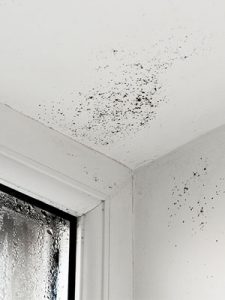
Dangerous Types of Mold and How They Affect You
You can probably spot mold when there’s an outbreak, but how do you know how hazardous it is? After years of performing mold remediation in Baton Rouge residences, CLEAR Restoration knows mold. It’s important to determine the mold outbreak’s toxicity to protect yourself, and your family from long-term illnesses brought about by pathogens and mycotoxins in mold.
[Related: Six Ways to Prevent Mold in Your House]
Three Basic Types of Mold
There are three types of mold – allergenic mold, pathogenic mold, and toxic mold. Each type varies in health effects and cleanup difficulty.
Allergenic Mold
Allergenic mold affects people with allergies and asthma. When allergy-prone individuals inhale or come in contact with this type of mold, they can experience extreme inflammation in their lungs and potentially require medical attention. People who are not allergic to mold are largely unaffected by small amounts of exposure.
Pathogenic Mold
Pathogenic mold is more infectious and can cause diseases like tuberculosis in people with weakened immune systems. Normally, the human body can fight off pathogens, but pathogenic mold can pose a health risk in people with compromised immune systems. This type of mold commonly affects infants and the elderly since their immune systems are weaker than most.
Toxic Mold
Lastly, toxic mold is highly dangerous because it produces mycotoxins, poisonous chemicals used in chemical warfare agents. Mycotoxins can enter the body through ingestion, inhalation, and skin contact. Toxic mold in any form can severely damage a person’s health, depending on their immune system.
[Related: How to Prevent Carpet Mold]
Types of Toxic Mold
Toxic mold produces mycotoxins that range from nearly harmless to bioweapon-level dangerous. Black mold is one of the most toxic mold species. It is usually found inside homes and is known to cause wheezing and difficulty breathing in adults and respiratory bleeding in infants. It’s one of the harder molds to detect since it grows in the walls and ceilings. Black mold grows in moist, warm environments like kitchens, exposed closets, basements, showers, baths, and toilets.
Green colored mold that you might see on wooden surfaces always produces mycotoxins, but health effects range from mild allergic reactions to lung infections. Green mold species can cause watery eyes, itchy skin, sneezing, and asthma-like symptoms.
Some types of toxic mold tend to grow in water-damaged homes, like white mold. This type of mold can be hard to spot because it has no pigment. White molds are powdery, and they grow on pale surfaces, which is one reason why water damage promotes white mold growth.
[Related: How Mold Inspections Work]
Get Rid of the Outbreak with Professional Mold Remediation
Regardless of the type of mold you’re dealing with, it’s important to remove any mold as soon as you can so no one in your house gets sick. If you see mold in your home, you should have it inspected and removed by a professional mold remediation company like CLEAR Restoration. Plus, if you have a mold outbreak, chances are that you have a moisture issue in your home that should be resolved before it creates more problems down the road.
CLEAR Restoration is IICRC certified to perform water damage restoration and Louisiana-licensed to perform mold remediation in homes and businesses. We’ll make sure your home or business is free from mold quickly and efficiently. Give us a call at (225) 245-3575 today.



